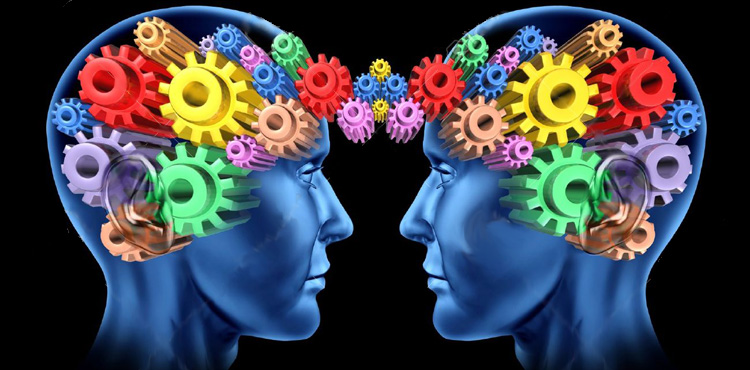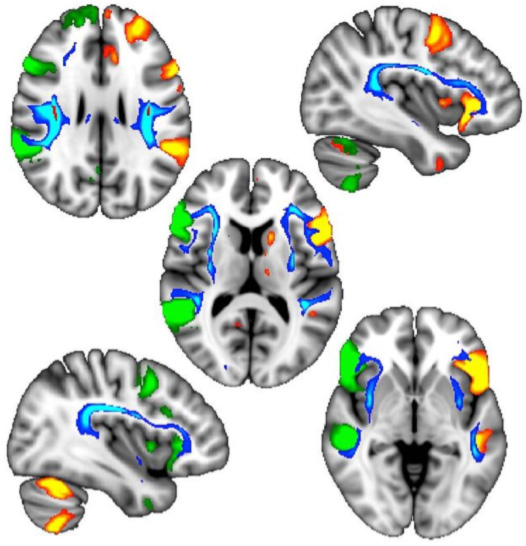
Christopher Bergland is a world-class endurance athlete, coach, author, and public health advocate. He wrote the following article, which was published in Psychology Today. In his article Christopher explains why left-handers use both sides of the brain for language, more than right-handers. Excel Translations does not endorse, recommend, or make representations with respect to the following content.
One of the most persistent neuroscience myths (neuromyth) is that the “left brain” is universally the seat of language and logical reasoning while the “right brain” facilitates creativity and nonverbal functions. The notion that some people are more “left-brained” and others more “right-brained” is another pesky neuromyth that needs debunking. Last month, a study (François et al., 2019) showed that if language regions in the left hemisphere are damaged, the right cerebral hemisphere can “take over” language functions. We now know that neuroplasticity allows the brain to reshape itself and shift lateralized functionality from the left side to the right side if it helps to streamline whole-brain efficiency.
Although most language functions do typically occur in the left cerebral hemisphere, for the past two decades, some neuroscientists have speculated that these statistics might be skewed by the fact that roughly 90 percent of the population is right-handed.

At the turn of the 21st-century, a groundbreaking study (Knecht et al., 2000) published in the journal Brain reported that left-handers often use more of their right cerebral hemisphere for language functions.
This week, a new paper (Wiberg et al., 2019) on handedness and hemispheric language dominance was published in the same journal, Brain. This UK-based study by a team of researchers affiliated with the University of Oxford illuminates how left-handers often recruit the right side of the brain for language.
As you can see in the colorful neuroimages below, this study found that language functions in left-handers seem to be more equally divided between both hemispheres. Left-handers’ hemispheric coordination is reflected by stronger functional connectivity of white matter tracts between left brain-right brain language regions.
The language brain regions were more coordinated in left-handers between the two sides of the brain (in green and orange) and were also connected by the white matter tracts influenced by one genetic region related to handedness (in blue). Source: Gwenaëlle Douaud, University of Oxford
“We discovered that, in left-handed participants, the language areas of the left and right sides of the brain communicate with each other in a more coordinated way,” first author Akira Wiberg of the University of Oxford said in a statement. “This raises the intriguing possibility for future research that left-handers might have an advantage when it comes to performing verbal tasks. Wiberg does note, however, that “it must be remembered that these differences were only seen as averages over very large numbers of people and not all left-handers will be similar.”
The most recent study by Wiberg and colleagues (2019) also used a combination of brain imaging and genetics to explore possible correlations between language areas in both hemispheres, handedness, and the risk of various neuropsychiatric diseases (and Parkinson’s).
Of note, the researchers found a weak correlation (that does not appear to be statistically significant) between the genetic regions involved in left-handedness, along with a “very slightly lower chance” of Parkinson’s disease along with a “very slightly higher chance” of schizophrenia. In a news release, the researchers emphasize: “These links only correspond to a very small difference in the actual number of people with these diseases, and are correlational, so they do not show cause-and-effect.”
References
Akira Wiberg, Michael Ng, Yasser Al Omran, Fidel Alfaro-Almagro, Paul McCarthy, Jonathan Marchini, David L. Bennett, Stephen Smith, Gwenaëlle Douaud, Dominic Furniss. “Handedness, Language Areas and Neuropsychiatric Diseases: Insights from Brain Imaging and Genetics.” Brain (First published: September 5, 2019) DOI: 10.1093/brain/awz257
S. Knecht, B. Dräger, M. Deppe, L. Bobe, H. Lohmann, A. Flöel, E.-B. Ringelstein, H. Henningsen. “Handedness and Hemispheric Language Dominance in Healthy Humans.” Brain (First published: December 1, 2000) DOI: 10.1093/brain/123.12.2512
Clément François, Pablo Ripollés, Laura Ferreri, Jordi Muchart, Joanna Sierpowska, Carme Fons, Jorgina Solé, Monica Rebollo, Robert J Zatorre, Alfredo Garcia-Alix, Laura Bosch and Antoni Rodriguez-Fornells. “Right Structural and Functional Reorganization in 4-Year-Old Children with Perinatal Arterial Ischemic Stroke Predict Language Production.” eNeuro (First published: August 5, 2019) DOI: 10.1523/ENEURO.0447-18.2019
Leave a Reply